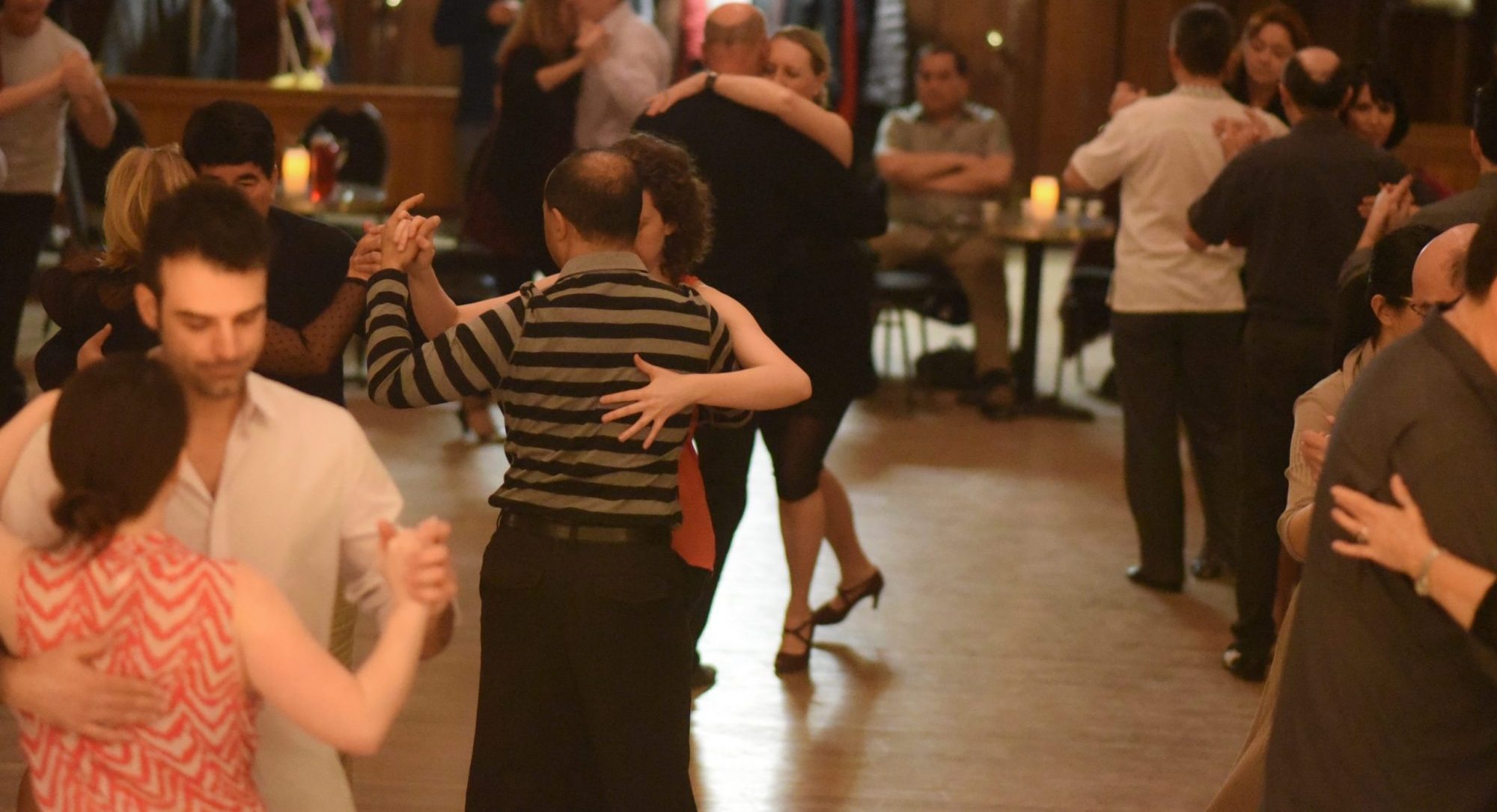1. When are the classes?
In 2025, we’re offering beginner classes and intensive courses several days a week, throughout the year. You can see our Beginner choices here.
If our current schedule doesn’t work for you:
- wait until next session. We vary our schedule throughout the year, so that people who can’t change their schedule can find a class for them.
- book private lessons for yourself or a small group at a time that’s convenient for you.
- subscribe to our email list and watch out for one-off events for beginners.
2. Are there drop-in beginner classes?
Occasionally we offer drop-ins for beginners, so you can see what tango is like before you commit to a session.
However, our beginner sessions are progressive – we build on the previous week’s material – because this is the best way to learn.
3. What will I learn in my beginner class?
In all beginner classes, we cover the fundamentals for enjoyable social tango: a comfortable leader-follower connection and a simple toolbox of moves. Everything you will learn will be the foundation for more complex steps later.
4. Is Argentine Tango like ballroom tango?
No. In terms of posture, improvisation, connection, musicality, and technique, they are very different.
- The posture of Argentine Tango allows you to dance in different embraces: close embrace that’s either v-shaped or completely connected at the chest, open embrace, or “close-enough” embrace. The embrace can change during a single song.
- There is no basic beat that corresponds to a “basic step.”
- Tango is improvisational and not based on sequences, so students must learn to create a partner connection through a sort of body language. You won’t learn a lot of figures at first.
- There is more freedom in relationship to the music. You could dance on a regular beat, or an irregular rhythm, or on the melody. You can choose to accelerate, decelerate, or take a pause. It’s all good!
- There are different techniques depending on the many Argentine Tango styles. During your tango journey, you will hear about styles such as Milonguero, Villa Urquiza, Salón, and Fantasía (show). We draw from different styles and teach a variety of techniques for versatile social dancing.
5. I’m a woman. Can I learn to lead?
Yes! Women can lead, and men can follow. Our teachers dance both roles fluently.
All beginners at Siempre Tango will learn the basics of both roles from the start.
6. I don’t have a regular dance partner. Can I still sign up?
Yes! You don’t need a regular dance partner to take tango classes with us. Most people attend without partners, and many people who attend with their partner in life choose to switch dance partners throughout classes and socials.
We do require you to pre-register for classes so we can create role balance between leaders and followers for each class.
7. Why do you encourage people to change partners during class?
Because Argentine Tango is all about leader-follower connection, trying steps and techniques with many people helps you to adapt to different dancers. It’s great preparation for milonga situations where you will dance with several people, or people you’ve never met.
However, if you signed up with a partner and prefer to dance only with him or her, you don’t have to rotate partners.
8. What kind of shoes do I need for tango?
When you first start, the only requirement is that your shoes are clean (i.e., not muddy or wet), comfortable, and allow you to pivot easily. Shoes should be fastened firmly on your foot – that means no open-backed sandals or mules. When you become more devoted to tango, you could invest in tango-specific footwear, but it’s not necessary to start learning.
9. Do I need special clothes to learn Argentine Tango?
No costumes or formal wear necessary! For classes, comfort is key. Your clothing should allow you to move easily. Because tango is danced relatively closely, your body heat will rise, so anything too warm will get uncomfortable very quickly.
10. What should I do to get the most out of my class?
PRACTICE!
Tango asks for a lot in terms of body awareness and posture. You might find this strange especially if you work at a desk or have not done a movement practice before.
The closeness between leaders and followers is new for most tango beginners in North America. It takes time and experience for any awkwardness to subside.
You can practice at home, but for best results, come to the Sunday Práctica, where you can ask questions and we can provide some individual attention.
11. When will I be ready to attend the milonga (the tango social)?
Only you can say when you are ready. However, we aim to have you to at least be able to embrace and walk comfortably with someone after a few classes. We also introduce milonga etiquette so you know how a milonga “works.”
At any social, you don’t have to dance; it’s okay to simply watch, have a snack, and socialise with other dancers. We hope that you find your way into the growing Ottawa tango community.

